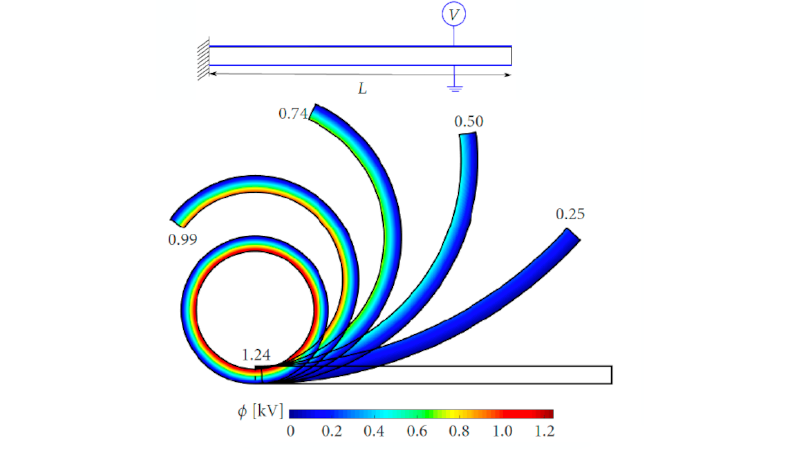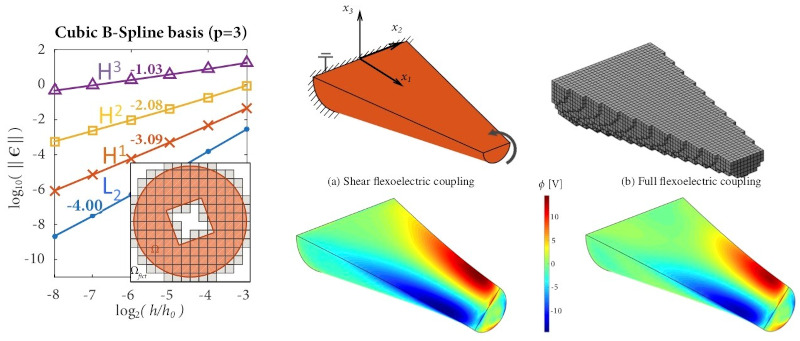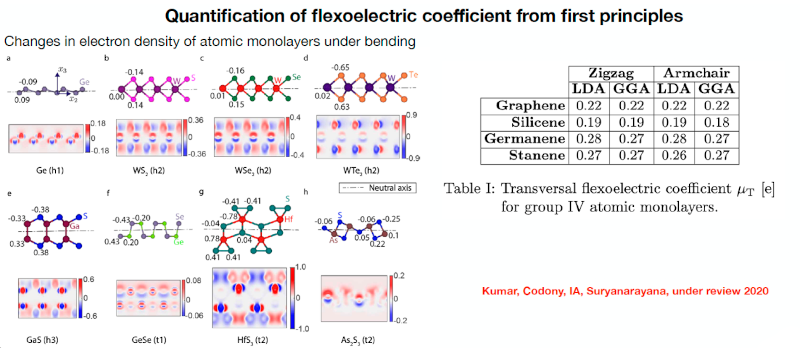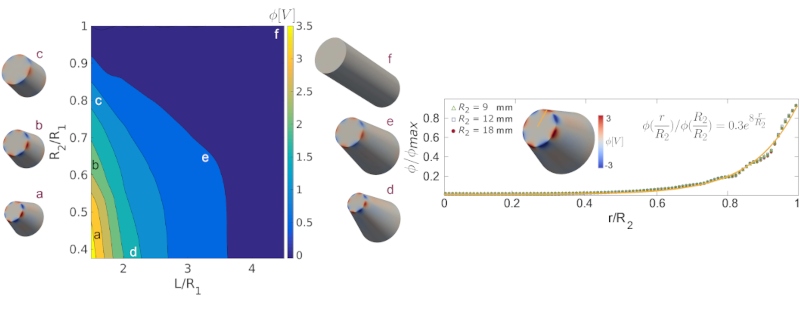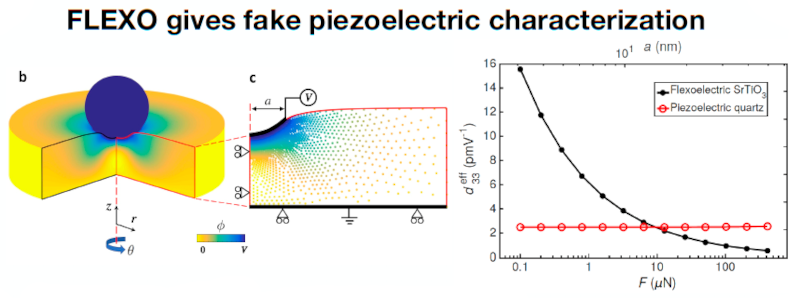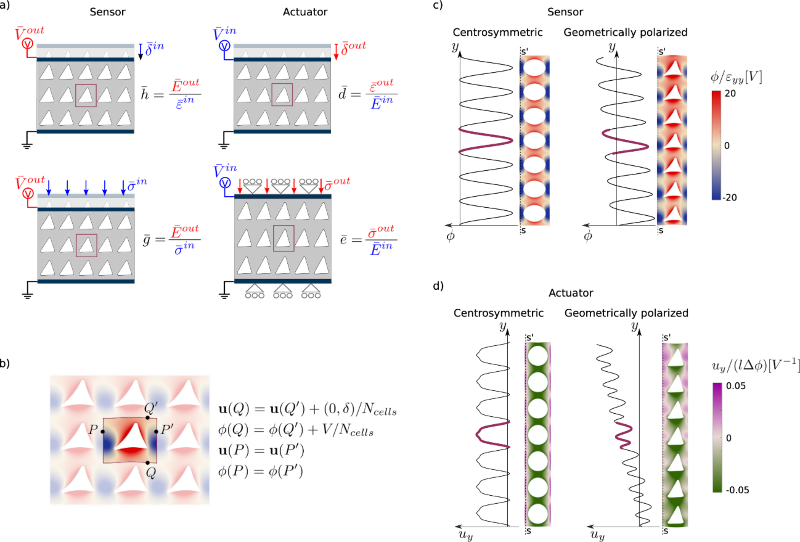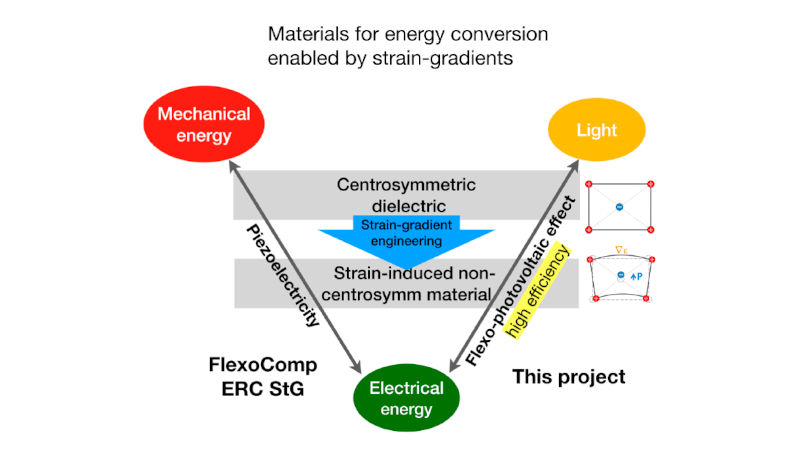Mechanics of Advanced Materials and Metamaterials
Mechanics of Electroactive Materials
Principal Investigator
David Codony
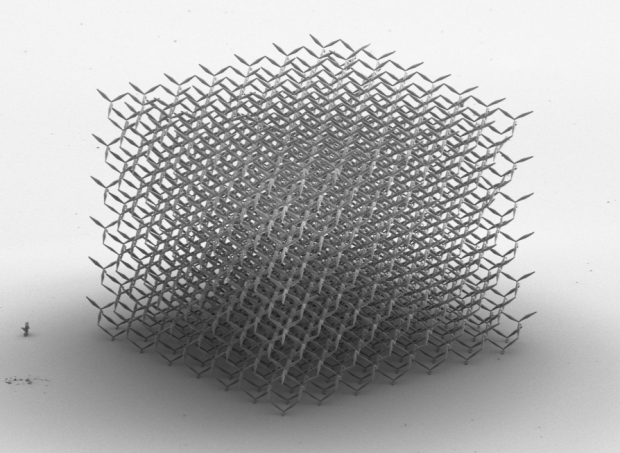
Overview
Research
Staff
Projects
This research group develops theoretical and computational models for flexoelectricity—the coupling between electrical polarization and strain gradients—to understand fundamental principles and design next-generation electromechanical metamaterials and devices.
The Mechanics of Electroactive Materials Group at CIMNE specializes in developing theoretical and computational models to investigate flexoelectricity in solids—a phenomenon where electrical polarization is coupled with strain gradients. The group employs primarily continuum models while exploring multiscale aspects in close collaboration with experimental researchers, aiming to understand how strain gradients influence the physics of dielectrics and to establish engineering principles for next-generation electromechanical metamaterials.
The group has established a comprehensive theoretical framework for flexoelectricity in both infinitesimal and finite deformation, clarifying the connections between different formulation families and their physical interpretations. Researchers have developed advanced discretization methods, including immersed B-splines and C0 penalty approaches, to efficiently solve the fourth-order partial differential equation systems arising in flexoelectricity across various geometries, materials, and electrode configurations.
Additional research directions include reduced theories for non-linear flexoelectric beams and shells, first-principles electronic structure calculations of flexoelectric systems, and investigation of fundamental flexoelectricity manifestations in torsion mechanics and strain/electric field singularities such as cracks and ferroelectric domain walls. The group also focuses on designing flexoelectric devices and metamaterials that achieve effectively piezoelectric properties from non-piezoelectric components.
An emerging research area is the theoretical and computational modeling of flexo-photovoltaics, aiming to design and optimize a new family of solar cells by understanding the interplay between mechanical deformation and photovoltaic properties. Through this diverse research portfolio, the group advances the fundamental understanding of electroactive materials while exploring their potential for innovative engineering applications.
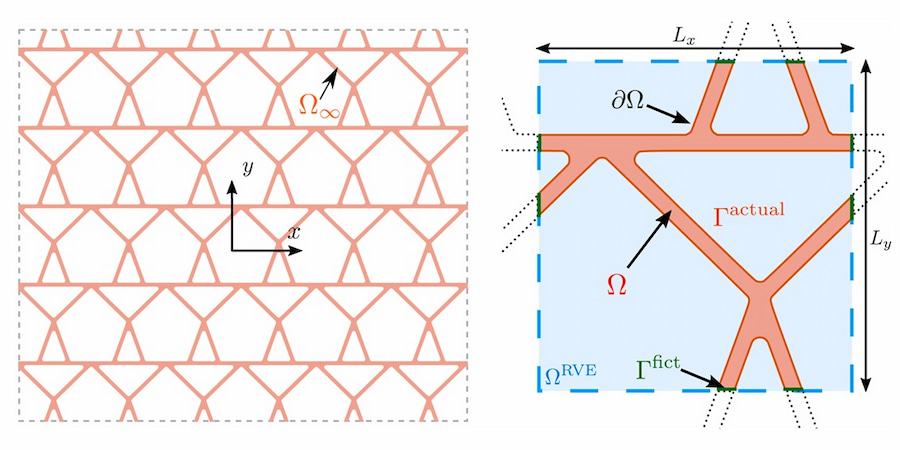
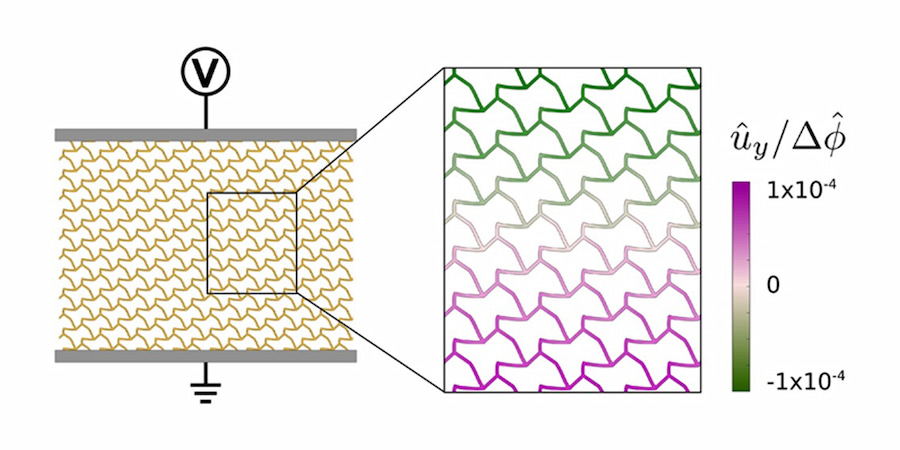
Research areas
Theoretical framework of flexoelectricity
Develop a comprehensive theoretical framework for flexoelectricity in infinitesimal and finite deformation, establishing the precise connections between the different families of formulations, their physical interpretation and the physical meaning of the corresponding set of high-order boundary conditions.
Efficient numerical solution of high-order general electromechanics problems
Development of advanced discretization methods, including immersed B-splines and C0 penalty, for the efficient solution of the 4th-order PDE system arising in flexoelectricity in general geometries, material and electrode configurations.
Reduced theories of flexoelectric beams and shells
Development of reduced theories for non-linear flexoelectric beams and non-linear shells to gain understanding of the physics and aid the design of new devices.
Flexoelectricity from first principles
Development of electronic structure calculations of flexoelectric systems to establish a precise connection with continuum models both guiding the development of enriched models accounting for nanoscale effects and finite surface effects and characterizing continuum model parameters.
Fundamental manifestation of flexoelectricity in torsion mechanics
Development of new methods to mobilize flexoelectricity under torsion to provide understanding about the fundamental physics and flexoelectricity characterization tools.
Fundamental manifestation of flexoelectricity in strain and electric field singularities: cracks, ferroelectric domain walls, creasing, AFM
Exploration of the physics of flexoelectricity in situations where large strain or electric field gradients develop.
Design and characterization of flexoelectric devices and metamaterials
Development of new concepts for the design of effectively piezoelectric metamaterials and devices from non-piezoelectric components.
Theoretical and computational modeling of flexo-photovoltaics
Development of a theoretical and computational framework for the simulation of flexo-photovoltaics aiming at the design and optimization of a new family of solar-cells.
Ongoing projects
Finished projects
Related news
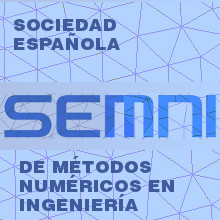
Two CIMNE scientists have been awarded SEMNI Prizes in its 2021 edition
A commission chaired by the president of SEMNI Elías Cueto has unanimously deliberated that the Best Thesis of the Year 2021 is the one defended by David Codony. Currently Severo Ochoa Post Doc Trainee at the Mechanics of Electroactive Materials research team,...
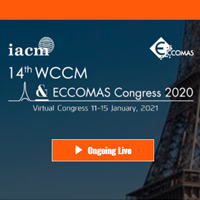
Marino Arroyo, Irene Arias, Xavier Oliver and Eugenio Oñate awarded at WWCM in Computational Mechanics & ECCOMAS Congress
The 14th World Congress in Computational Mechanics & ECCOMAS Congress took from January 11th to 15th, 2021. The Opening Session was introduced by the presidents of both scientific societies organizers of the event, Prof. Antonio Huerta (IACM) and Michał Kleiber...







